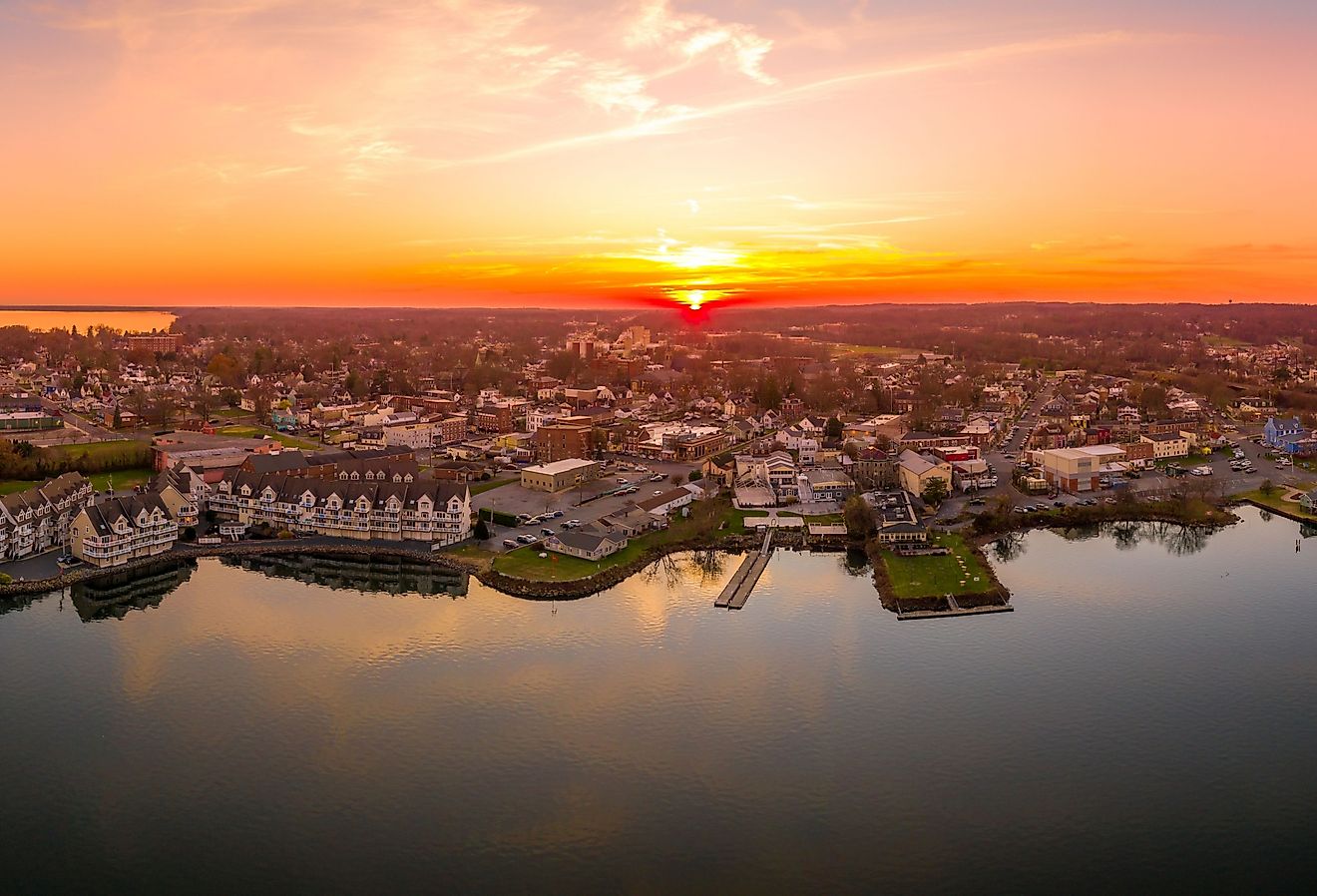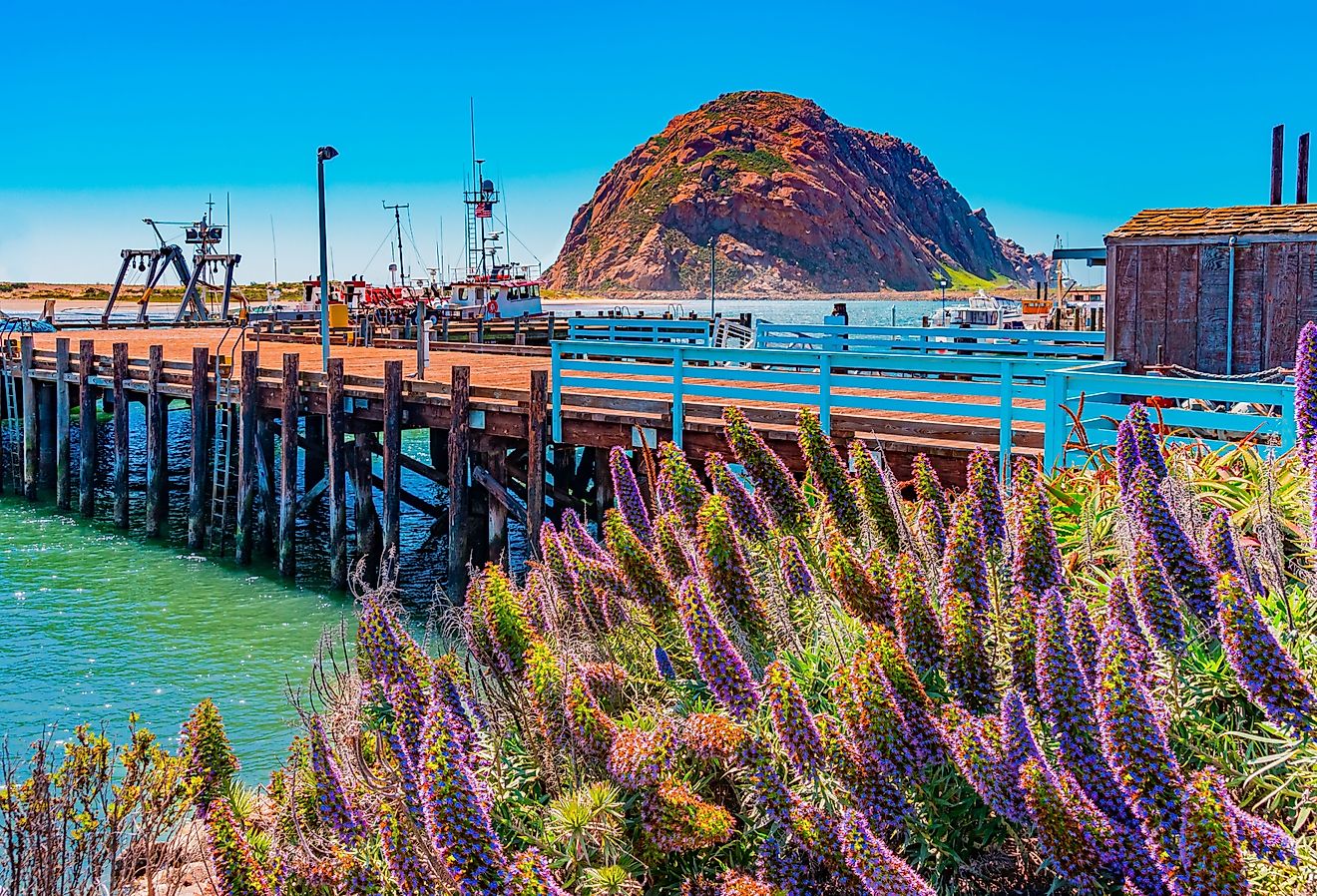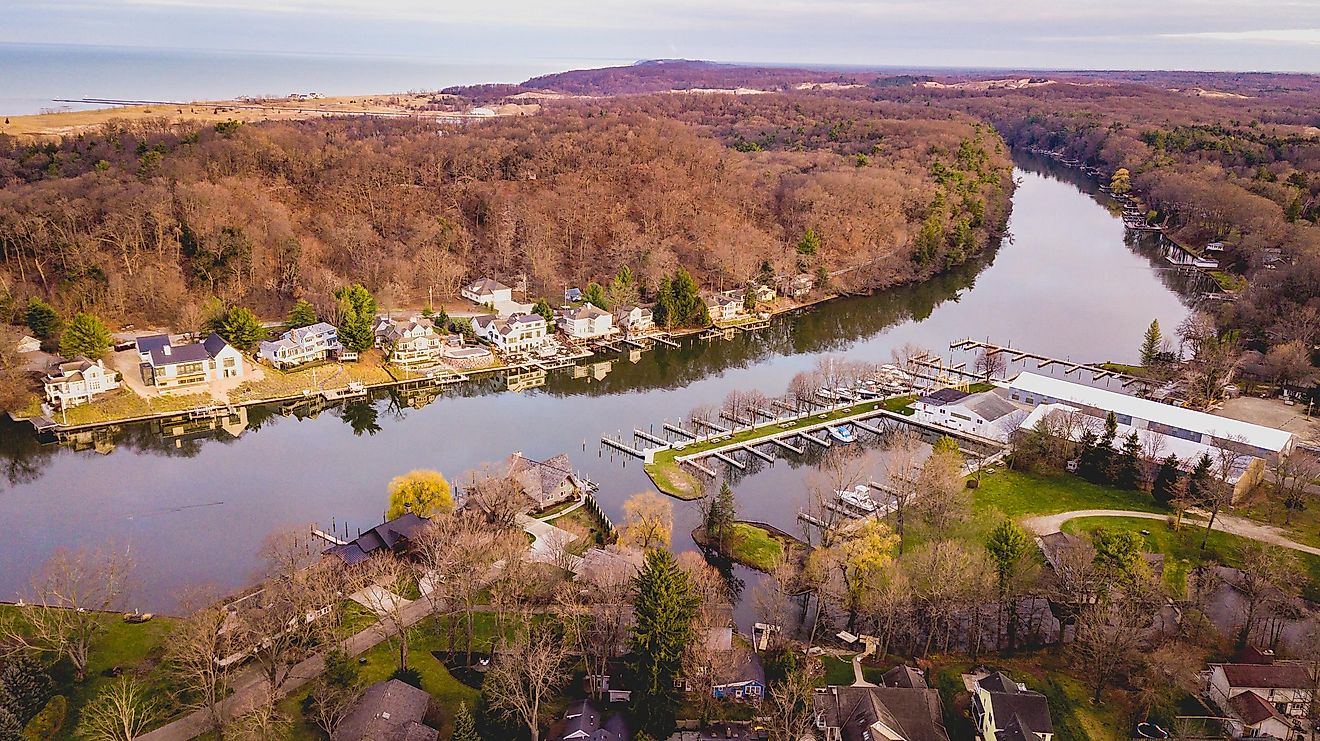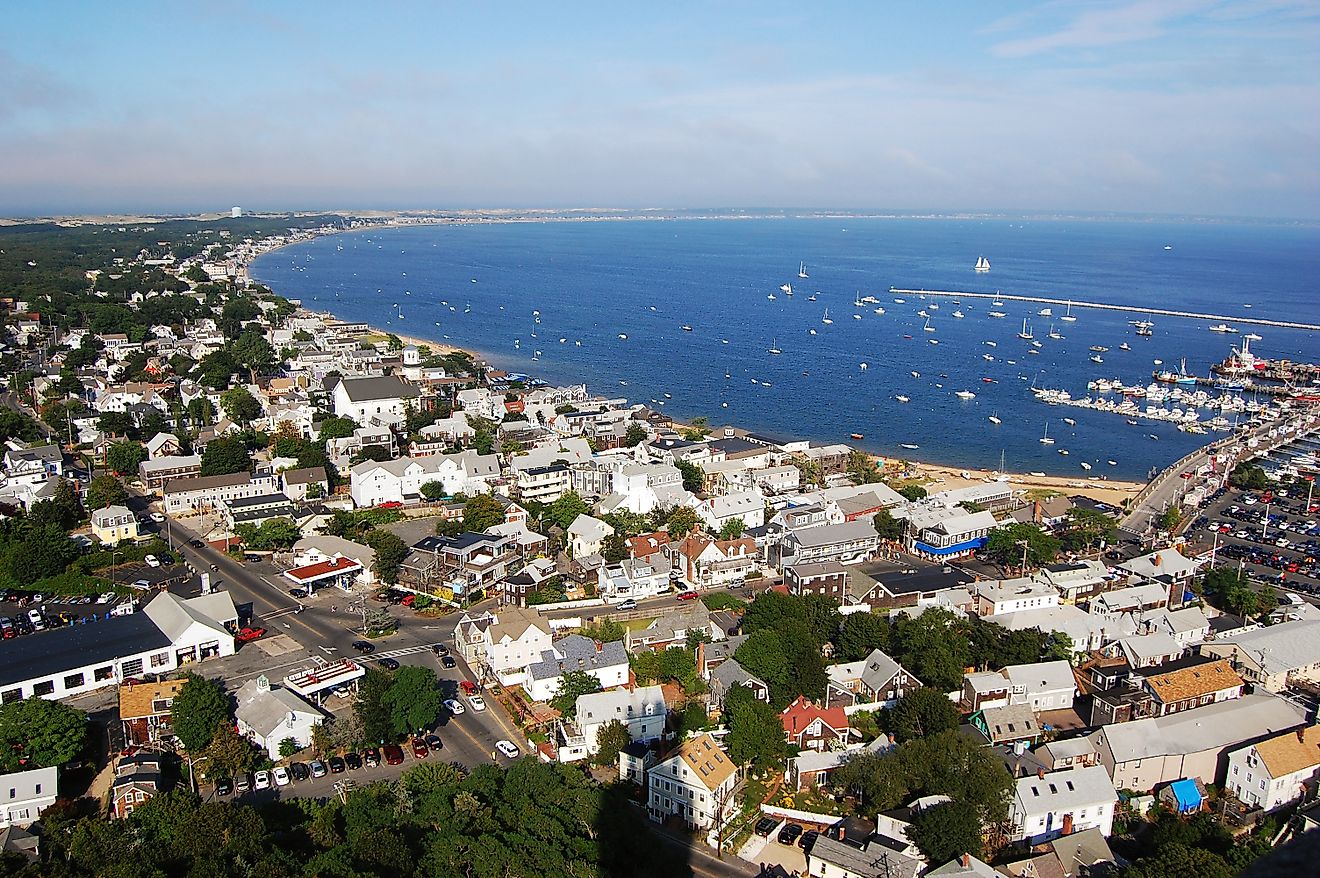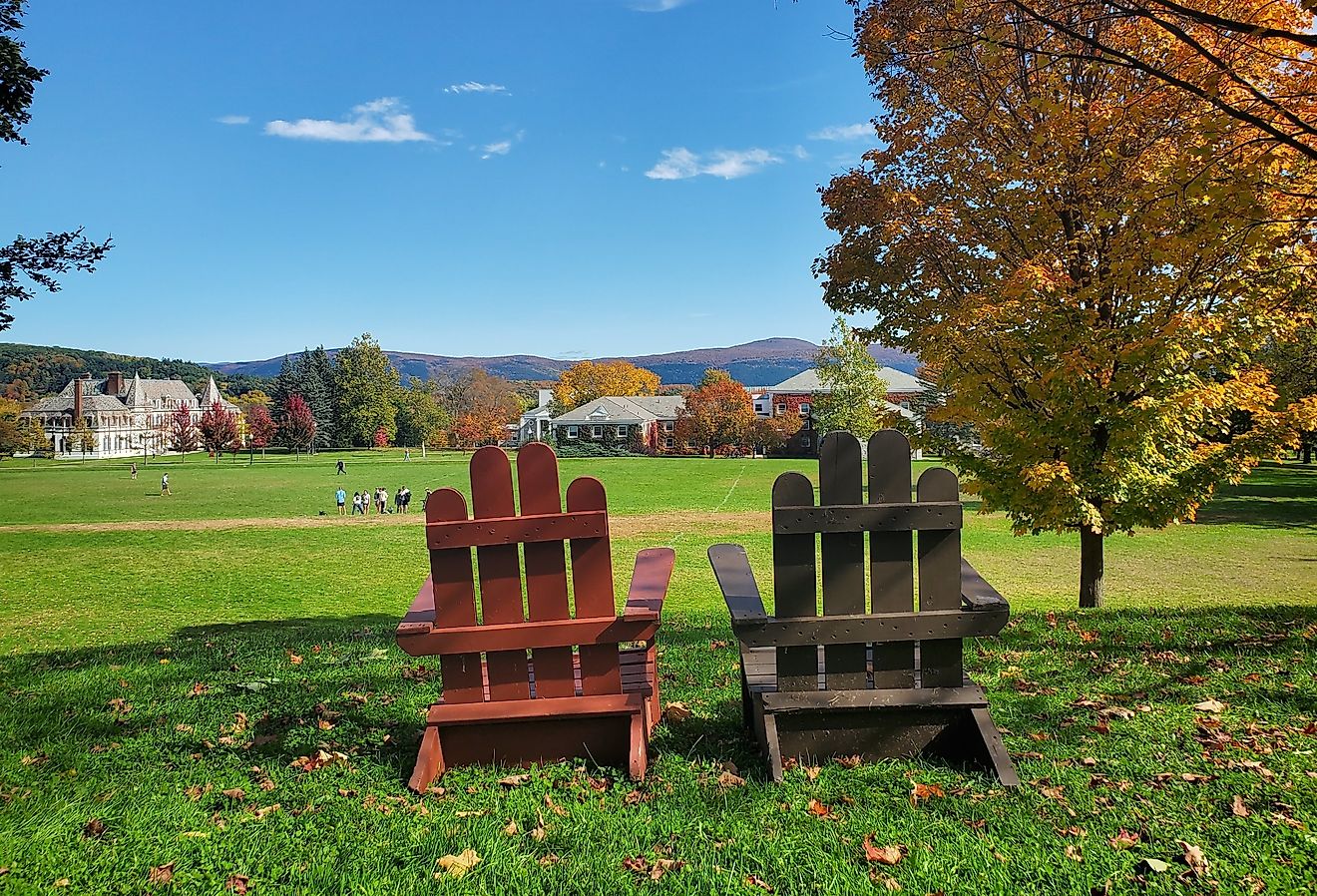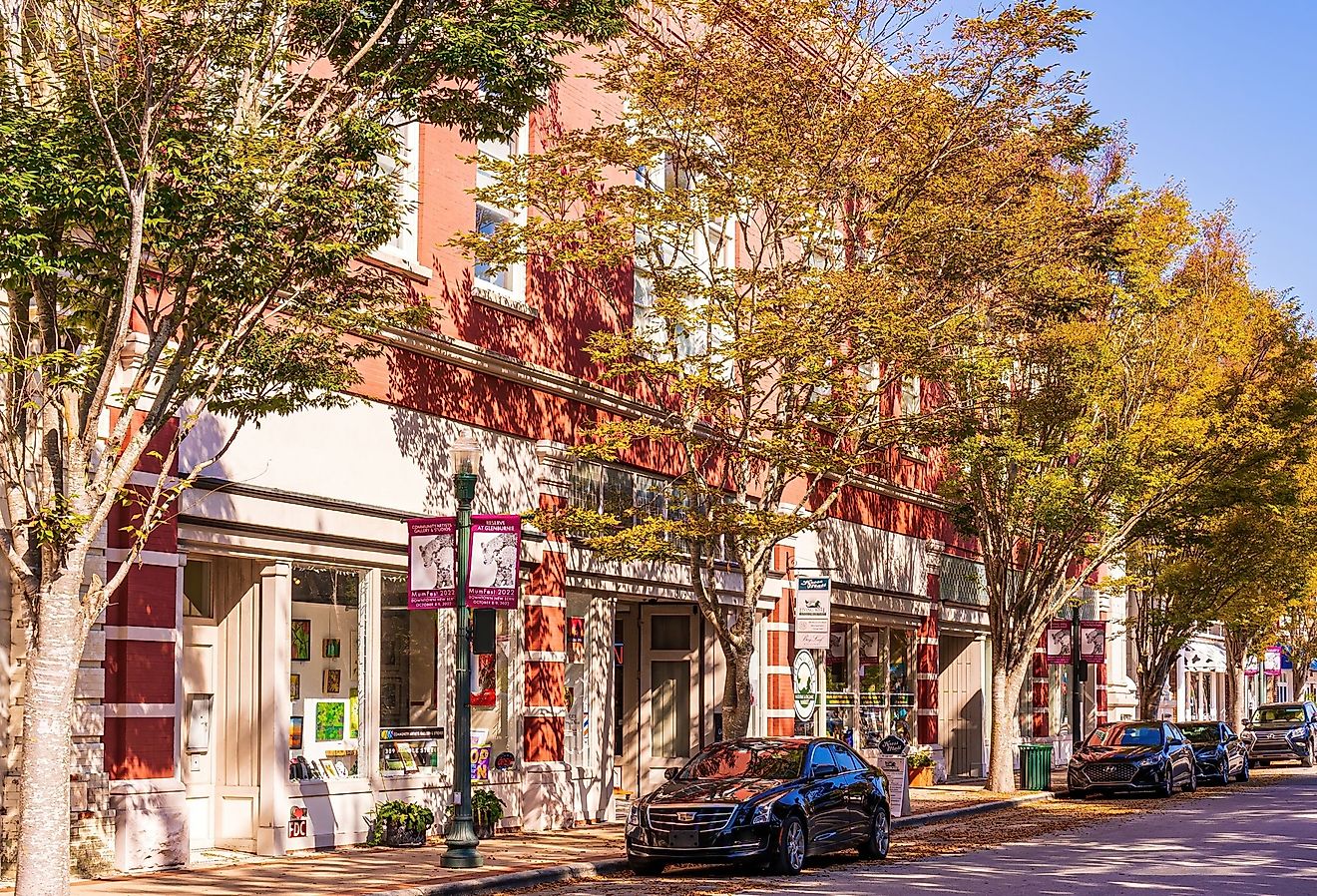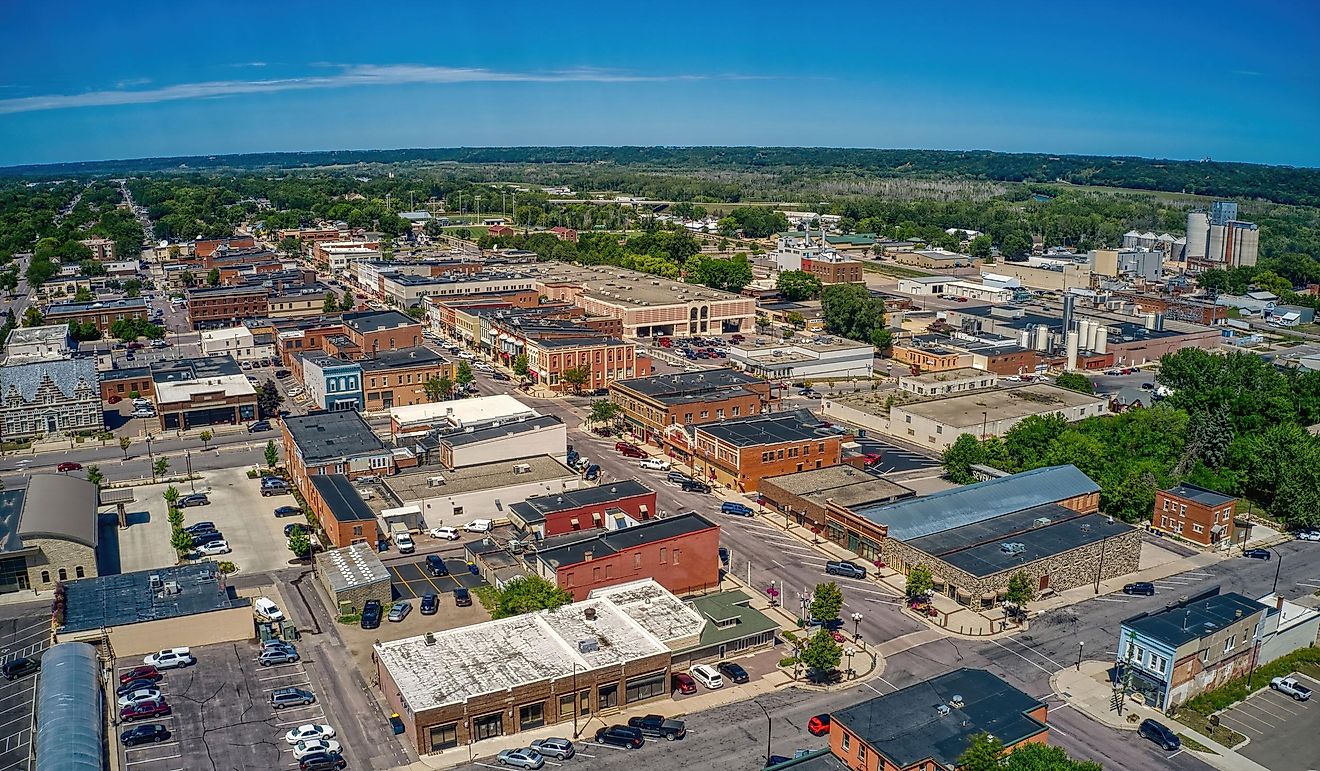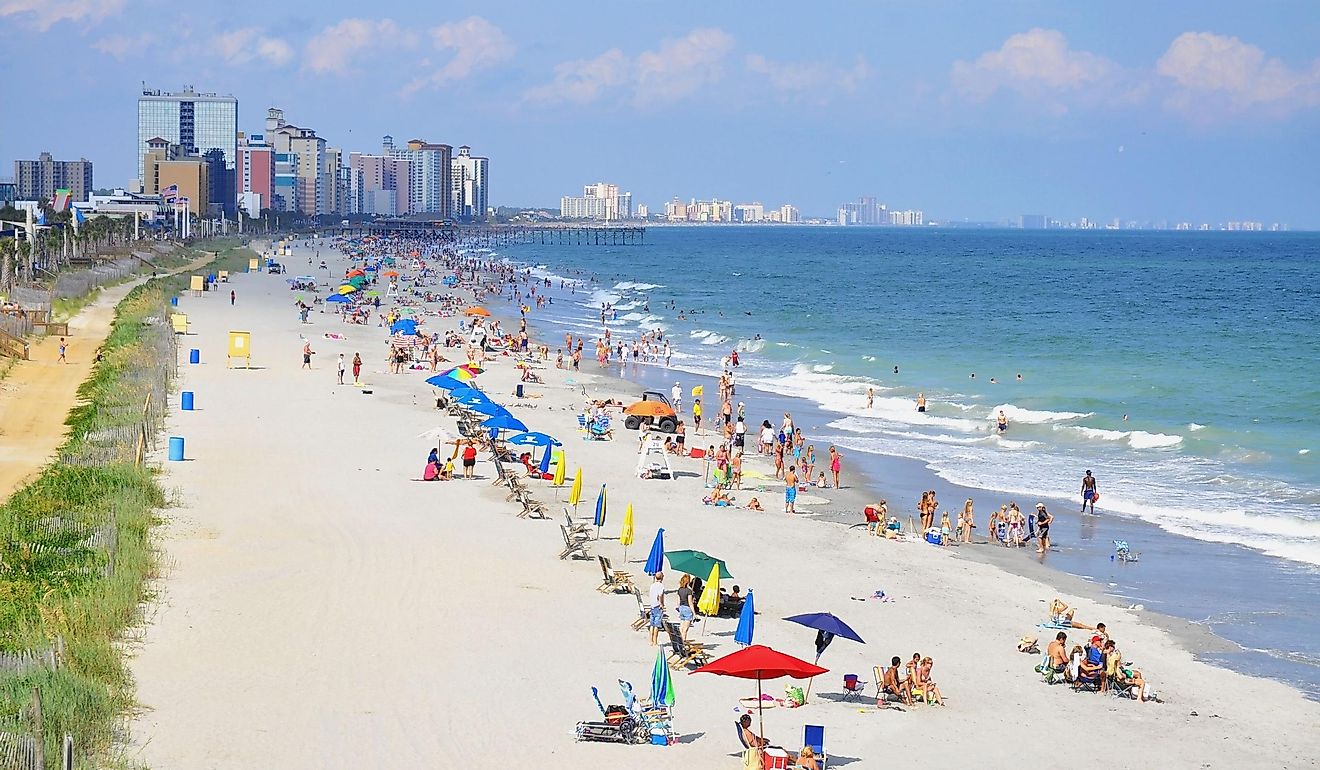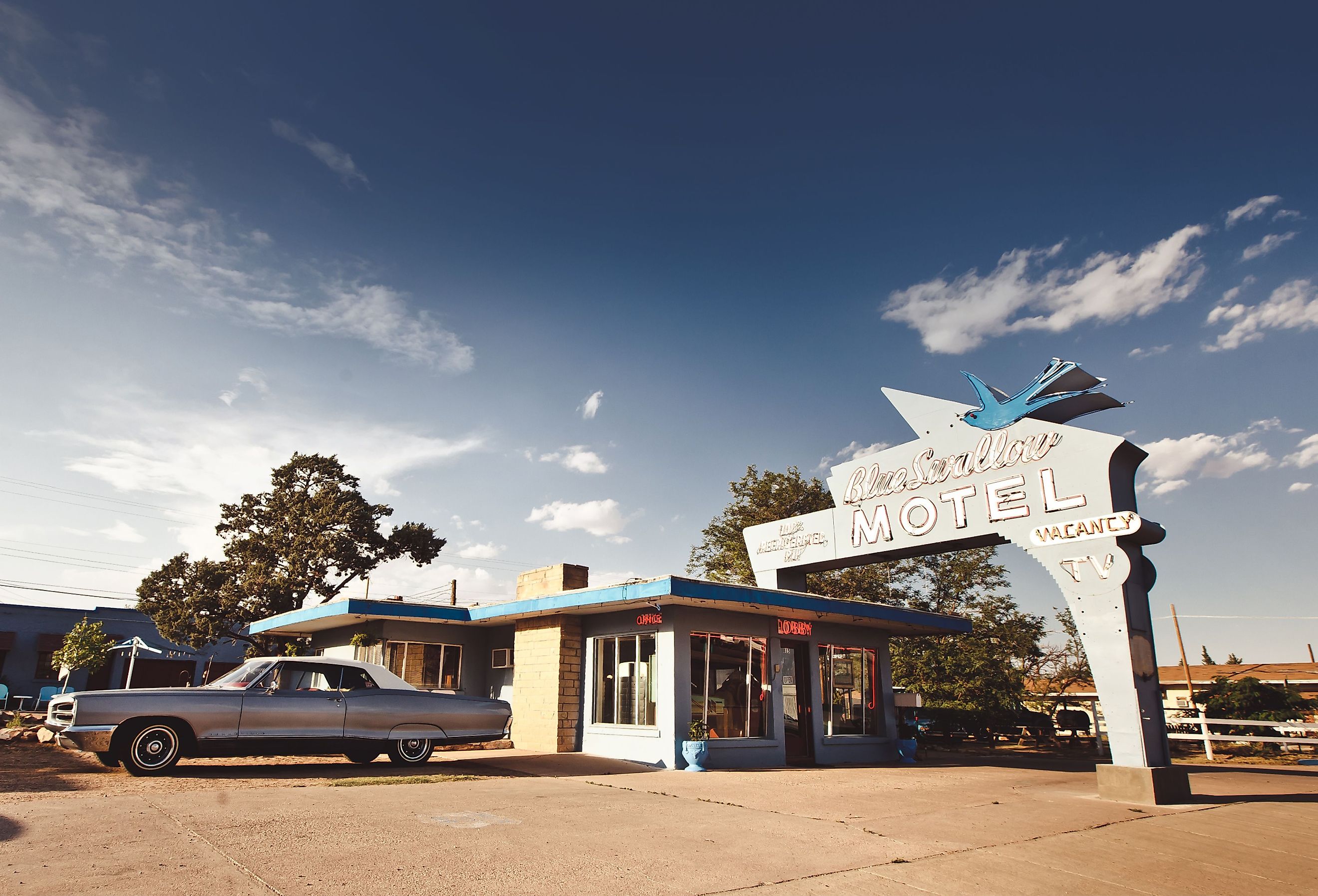
6 Most Vibrant Towns in New Mexico
Discover the Land of Enchantment: New Mexico. Situated in the heart of the American Southwest, New Mexico boasts a rich tapestry of history, culture, and natural wonders that attract travelers from around the world. From the ancient Pueblo dwellings to the panoramic views atop Tucumcari’s mountain, Join us as we dive in to explore the many towns that make New Mexico a destination unlike any other.
Taos
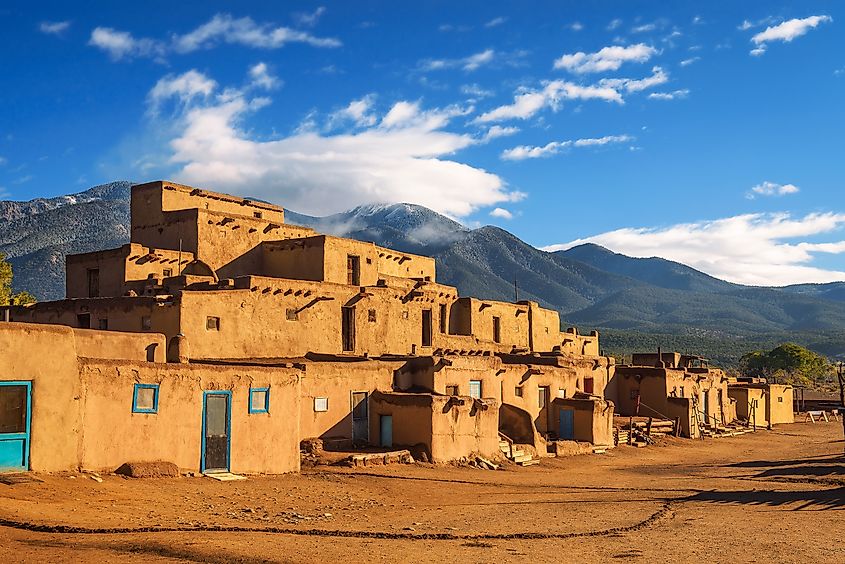
Well known for its historic Adobe buildings, most notably the Taos Pueblo, the only living Native American community that is both a World Heritage Site and a National Historic Landmark belonging to a Toas-speaking Native American tribe of Puebloan people, these multi-story dwellings can reach up to six dwellings high and are made entirely from adobe (dirt mixed with water and straw). The Puebloan people have inhabited these particular dwellings for over 1000 years, as they were constructed around 1325 AD, making them the oldest continuously inhabited community in the United States.
The Grande Gorge Bridge is one of America's highest and most famous bridges, with a height of 565 feet (172 meters) and a span of 1,280 feet (390 meters). This bridge was built in 1965 and spans over the Rio Grande. It allows pedestrians to stand on several platforms that project past the sidewalk and main railing, sure to give you a spell of vertigo when doing so. A community of solar grid homes spanning over 600 acres named Earthships uses minimal reliance on public utilities and fossil fuels instead of using natural resources like the sun and rainwater. It can withstand the extreme temperatures in the desert. Most of them reside in. These extraordinary homes were first designed by Michael Reynolds in 1988 and can be found in all 50 states and over 20 countries; however, only in Taos can you book a stay in one of these enjoyable Earthships.
Tucumcari
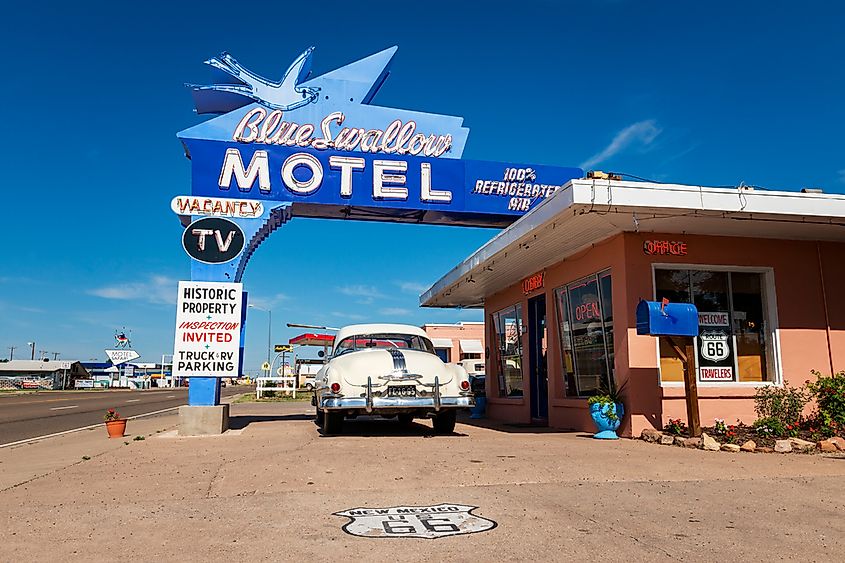
The Tucumcari Mountain has been a landmark for travelers along the Canadian River as well as being the natural landmark for the city of Tucumcari itself; it is where the town got its name. With an elevation of 4,976 feet, this mountain rises 885 feet above the city, offering panoramic views of the surrounding area. Visitors can hike or drive to the top of the mountain to enjoy scenic vistas and capture memorable photographs. As visitors make their way through town, they will come across the many murals spread all over downtown Tucumcari. You can admire the colorful and detailed murals depicting scenes from Tucumcari's history, local landscapes, and Route 66 themes. These wonderful murals began appearing in the late 1990s; today, there are nearly 100 murals to be found, with many more to come. Opened in May 2000, the Mesalands Community College's Dinosaur Museum invites visitors to step back in time to the Mesozoic Era and check out its largest collection of bronze skeletons, fossils, and replicas of prehistoric creatures in the world in its 10,000-foot exhibit space. While learning about paleontology and exploring interactive exhibits, visitors can also participate in hands-on fossil preparation activities.
Silver City
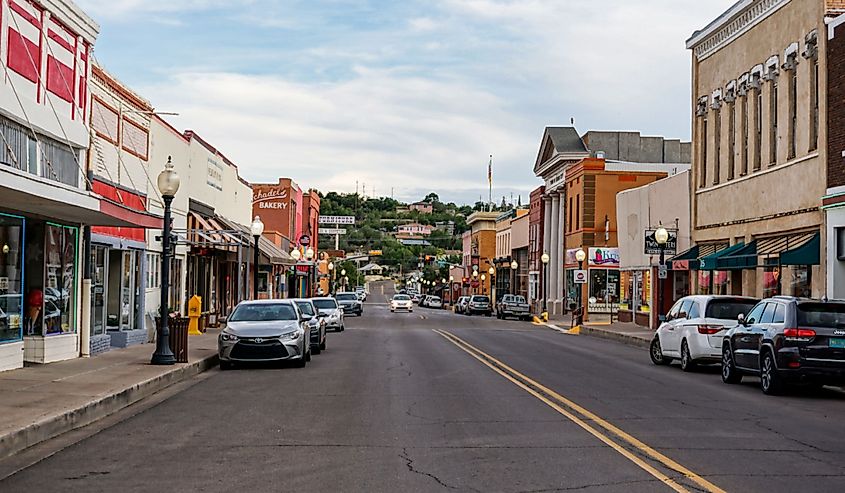
Down the street, a little ways from the Grant County Courthouse, is a private home with a wall made from unusual materials. Thousands of different glass bottles that are held together by stucco; the mailbox is even built into the wall, as well as old bicycle wheels that serve as windows. This construction method pays tribute to the Roman times when they used clay bottles to conserve concrete and lighten heavy structures. This method has continued throughout the ages, like in the Earthships in Taos. Winding its way through the heart of Silver City is a mass of trees and other vegetation, a park with an odd name: the Big Ditch Park. However, it used to be the original Main Street of Silver City until 1895, when it was destroyed by a flood, turning it into a gorge. In the 1970s, the citizens decided to preserve the area, turning it into a walking trail and park, making it a wonderful spot for relaxation. The H.B. Ailman house was built in the late 1800s and has been many things throughout its time, including a fire station. Today, it hosts the Silver City Museum, which opened in 1967 and showcases Silver City’s past through 15,000 old photos and over 20,000 artifacts.
Aztec
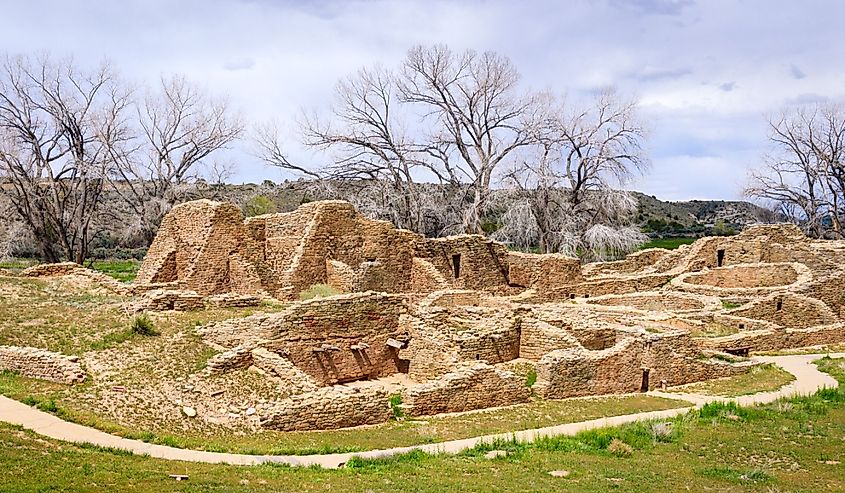
Around the late 12th century, the Pueblo tribe built what is today called the Aztec Ruins. Even though the Aztecs were never in New Mexico, the settlers who discovered the site thought these ruins were from the Aztecs. It was a bustling community used as a public ceremonial, economic, and political center. It was used for over two centuries until around 1300 when the inhabitants left for unknown reasons. Today, visitors are welcome to take a half-mile self-guided tour through the ruins, explore the well-preserved wood roofing and skillful stone masonry, and enter the ceremonial Great Kiva, the oldest and largest reconstructed semi-subterranean building over 40 feet in diameter.
The Aztec Speedway was established in 1952 and has been providing entertainment to the residents of New Mexico for 72 years, offering racing opportunities for anyone from 4 to 60 years old throughout the racing season. With a wide variety of auto racing from stock cars and UTV racing around the ⅜ mile-high clay oval track. Lastly, Aztec has more than 400 natural arches; however, getting to these arches can be a little difficult as they aren't near any trails. Several, however, are perfect for photos. The most known is the Cox Canyon Arch, which has an easy route to get to. The arch itself is on a terrace that overlooks the canyon wash, is approximately 35 feet wide, and has an 18-foot opening.
Las Vegas
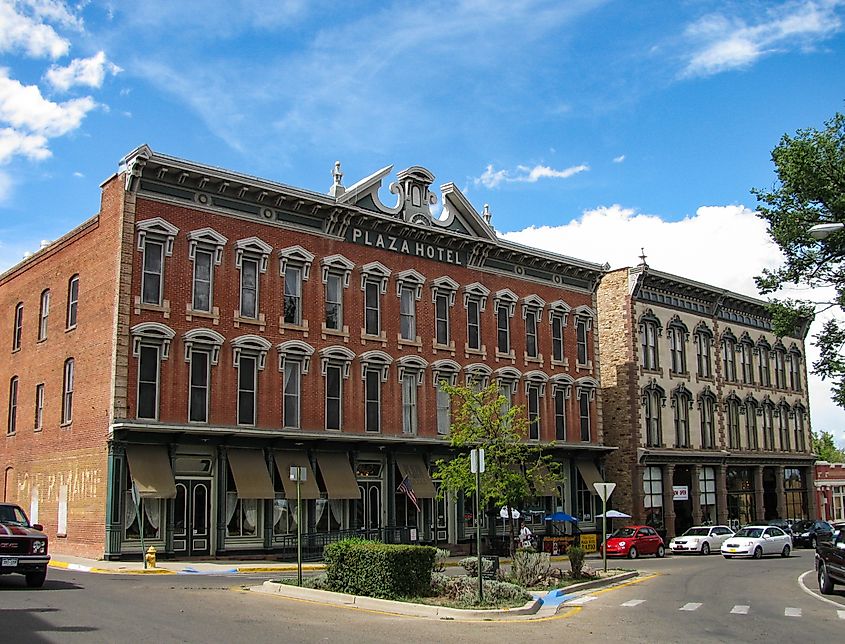
The Dawn Light Sanctuary, located inside the United World College, serves as a refuge for those seeking a break from the hustle and bustle of daily life to reconnect with themselves and explore deeper aspects of their consciousness. The sanctuary was created in 1996 by artist Virginia Dwan, utilizing the strong light that comes in from the north of New Mexico. The building is aligned perfectly with the sun, moon, and stars, so the six large prisms catch light all day long, casting rainbow ribbons on the floor below. Built in 1898 by entrepreneur Fred Harvey, the La Castaneda Hotel was the first Harvey Hotel and the first restaurant on train tracks in New Mexico, offering a quick service space for people traveling via train. In June of 1899, Theodore Roosevelt and the Rough Riders had their first reunion inside the hotel after the Spanish-American War. Sadly, it closed its doors in 1948 as the Great Depression took its toll on this iconic place. It then sat vacant until 1960, when it was purchased and stabilized, and then in 2014, it was sold to its current owners, who renovated and restored it until it later reopened its doors in 2019. It still operates as a hotel and restaurant, with 16 rooms, each one different from the last; each room is named after a Fred Harvey Historic Site and an animal. The restaurant named Trackside offers a delicious combination of American cuisine with southwest flair. On the outskirts of Las Vegas is one of three known remaining drive-ins in New Mexico. Fort Union Drive-in operates during the weekends of the summer and spring months and hosts weekend movie showings with a capacity of just over 300 cars. This single-screen theater is a definite blast from the past.
Madrid
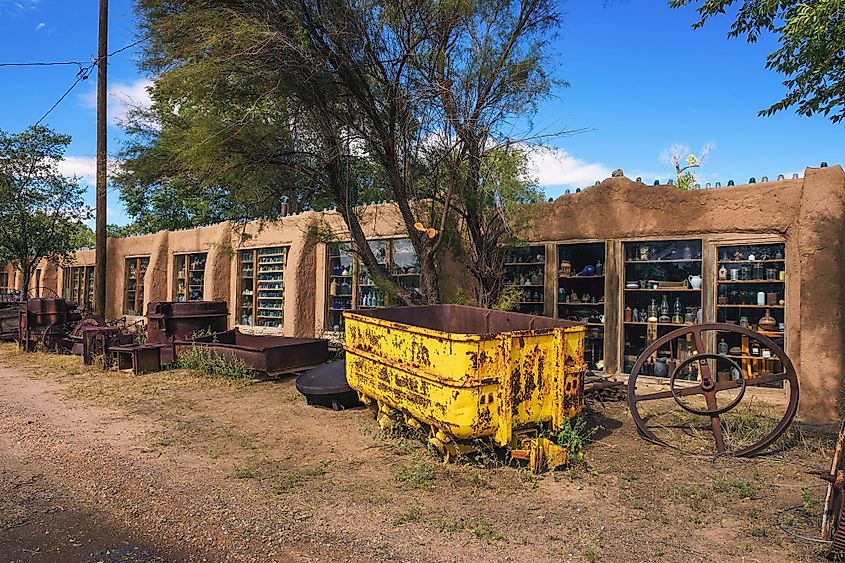
The Mine Shaft Tavern once served as a gathering place for Madrid’s miners in 1947 with a 40-foot stand-up bar, the longest in New Mexico. In the 1950s, most of the mines were shut down, making Madrid a ghost town for around 20 years. Presently, it has been re-opened and serves as a beloved local spot for tourists and locals alike, with live entertainment, scrumptious food, and an amazing ambiance of the past. Also on the property is a mining museum with a 1901 steam locomotive sitting outside. Inside, however, there are exhibits that pertain to Madrid’s mining town past, showcasing old mining equipment, vintage vehicles, and other memorabilia pertaining to Madrid's past. Along the infamous Turquoise Highway is the roadside attraction named Connie’s Photo Park. Started in 2010, this outdoor photo studio was created by Connie Mayhew, who hand-painted all 15 head-in-the-hole boards ranging from an alien to a set of hippies. Connie created these peculiar works of art as a tribute to her Key West roots, as Key West is one of America's head-in-the-hole capitals. While visiting, you are sure to come across the artist herself, as she owns and maintains the park, which is open to the public and takes donations for use.
New Mexico is a state that captivates with its blend of history, culture, and natural beauty. Whether travelers enjoy hiking through the majestic mountains, exploring ancient ruins, or soaking in the vibrant arts scene, there is something here for everyone to enjoy. From ancient Aztec ruins to engaging with fossils, these exciting towns are home to a wealth of amusement.
